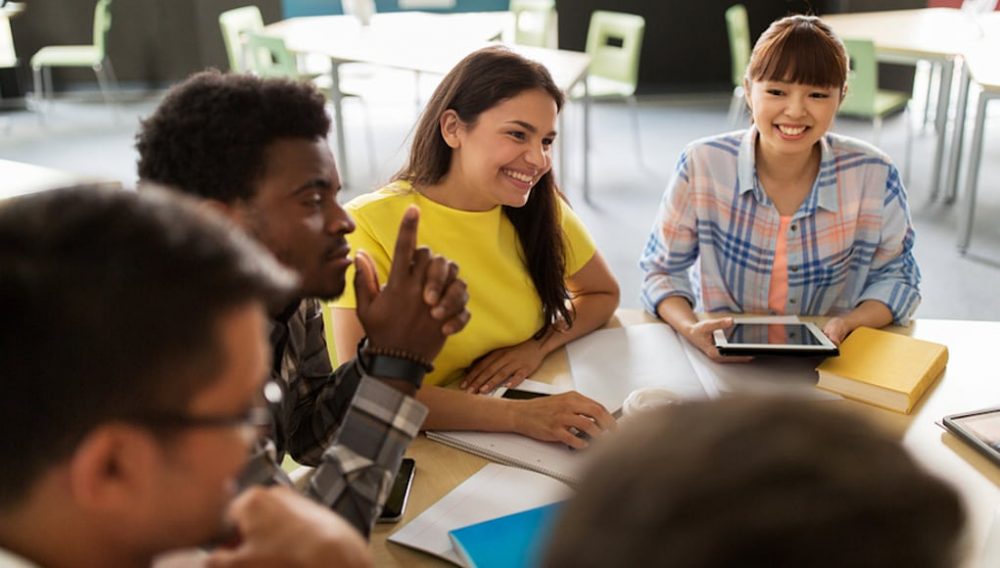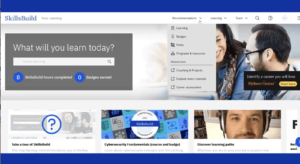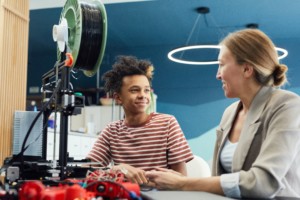Developing 21st Century Skills and Content Knowledge Through Dance

For years, workshop facilitators have been showing an amateur video from the 2009 Sasquatch music festival as a way to demonstrate the complex relationship between leaders and followers in the creation of a movement.
The video intrigues me not so much because of its implications for change management but more for the message it conveys about the power of movement to express complex ideas.
In early March I spent a few days in Austin, Texas, at the SXSW EDU conference. Among my routine activities is a workshop called Enhancing Student Creativity through PBL. I’ve delivered a variation of that workshop more than a dozen times at SXSW EDU and ISTE. My act is polished and popular. It’s also in need of deep revision.
At the conclusion of the workshop, I was approached by two organizations that focus on movement as an integral tool in the development of 21st-century skills. Not just the obvious skill of creativity, but critical thinking, collaboration, and communication as well. When I returned home to Northern California I began to explore this concept.
Moving Minds is a small company organized by sisters Elizabeth and Kate Jewett. The Jewett siblings facilitated a workshop called Mind-Body Decision Making at SXSW. The session focused on enabling participants to develop awareness of how our mind-body connection affects the way we communicate, collaborate, and create.
Elizabeth Jewett earned a Ph.D. in Developmental Psychology from Columbia University with a concentration in Cognitive Development and Problem-Based Learning. Her research explores what learning looks like when it is designed to improve our ability to identify the right questions and work together to solve problems. Kate is a dancer and choreographer based in Brooklyn.
Elizabeth makes a powerful argument in favor of dance as a means to develop 21st-century skills: “One common thread of 21st Century learning skills is that they cannot be taught in a “how-to” format. They involve making decisions within an infinite number of unpredictable contexts. These contexts are defined by the experiences and emotions of each individual involved. Movement is a way to fill in the blanks between the logical “how-to” or “dos and don’ts.” It brings the internal senses to the forefront and increases our awareness of their role. Not only in how we decide but also in how our decisions are conveyed. Dance is particularly valuable to this process because it combines internal awareness with action. “
A few minutes after I finished my chat with the Jewett’s I was approached by Amy Tepperman, the founder of a Toronto-based startup called Moving Edgeucation. Tepperman spent eight years working for a digital animation company before leaving that career to provide what she calls “dance-party” style workshops for teachers and students. Those workshops turned into Moving Edgeucation’s business model.
The company’s website explains its services and offers free curriculum. A quick scan of the activity plans led me to Zombie WORDocalypse, which helps elementary grade students develop an understanding of parts of speech through physical movement. Who does not love a good Zombie activity? Anway, this focus on literacy is stage two in the curricular development of Edgeucation, which launched its disciplinary focus with activities focused on math and movement.
As Tepperman explains, “It started with math, a way to explore all the concepts through movement and creativity. It was about having multiple ways of coming up with the answer through movement. Then we started to move into literacy, creating ways to bring different books to life. Now we are ready to move into science. We want to keep creating materials that teachers can use to explore core subjects through movement.”
Yet another thing I didn’t know – this work on movement and skills/knowledge development has been going on for years but is only now gaining prominence because of the focus on Whole Child Education and social-emotional learning.
An organization called Human Kinetics has produced a book called Teaching Children Dance. Authors Theresa and Stephen Cone explore how dance experiences assist children in cultivating the 21st-century skills of creative thinking, collaboration, communication, global awareness, and self-direction.
I enjoy the Cones explanation of how movement develops 21st-century skills: “Each time a teacher asks students to find various ways to make a round shape with their bodies or move across the space using various directions and levels, the students engage in creative thinking to discover solutions to the task. As the students make the shape and move across space, they evaluate the success of their solutions and increase their knowledge of the ways the body can move to express and communicate a concept. This self-directed moment builds on previous creative experiences and develops the children’s understanding that many solutions exist through using the exploration process.”
Such ideas are becoming more commonplace in U.S. educational policy and practice. For example, the Kansas State Department of Education has created Dance and Creative Movement Standards that begin with the bold statement that “dance is core to academic growth and central to the education of every student.” The KSDE standards highlight the primary benefits of dance and movement:
Through Dance Education, students learn the meaning and value of creativity and innovation by:
- demonstrating originality and inventiveness in work and being open and responsive to new and diverse perspectives;
- developing, implementing, and communicating new ideas to others through creative movement; and
- acting on creative ideas to make a tangible and useful contribution to the domain in which innovation occurs.
Through Dance Education, students obtain critical thinking skills that shape their efforts and affect their personal value choices by:
- exercising sound reasoning in understanding and making complex choices and decisions;
- understanding the interconnections among systems; identifying and asking significant questions that clarify various points of view and lead to better solutions; and
- framing, analyzing, and synthesizing information in order to solve problems and answer questions.
This conceptualization was not essential to the vision of the Partnership for 21st Century Learning when the Framework for 21st Century Learning was released a decade ago. But now, movement can be added to the mechanisms through which students develop the 21st-century skills of creativity, collaboration, critical thinking, and communication.
Be warned. If you come to my 2020 session at SXSW EDU you had better bring your dance shoes…
For more, see:
- The Shift to Innovation Through the Power of Networks
- Fostering High-Quality Student Experiences Through Projects
- The State of Digital Play in Preschool
Stay in-the-know with innovations in learning by signing up for the weekly Smart Update.







0 Comments
Leave a Comment
Your email address will not be published. All fields are required.